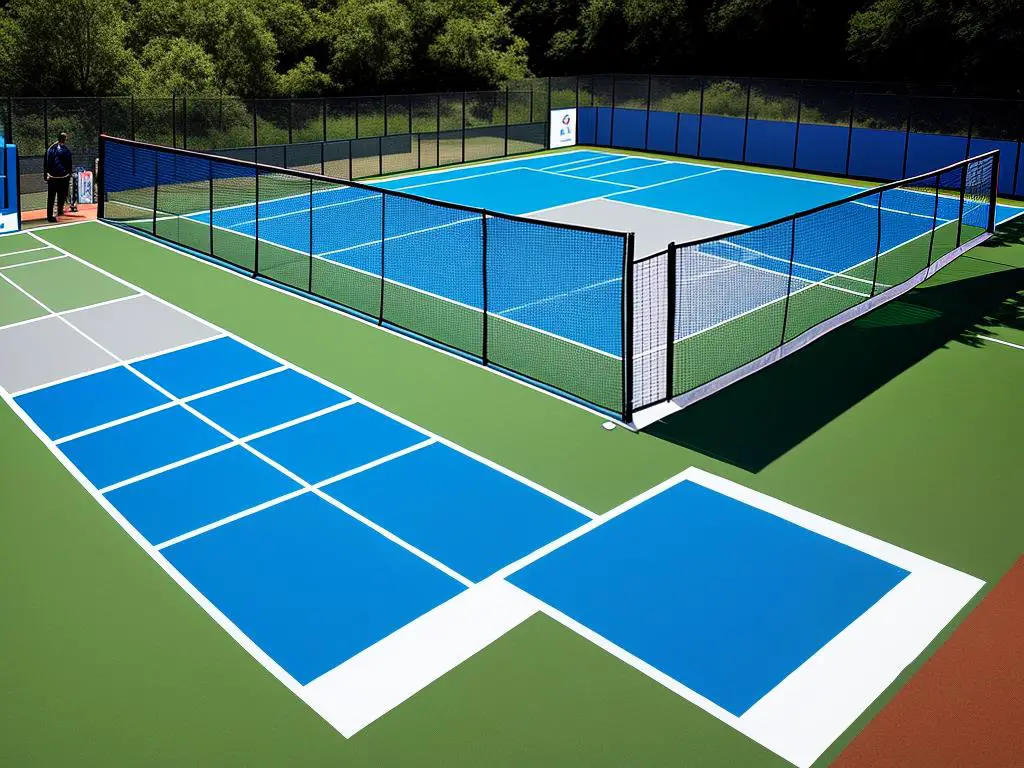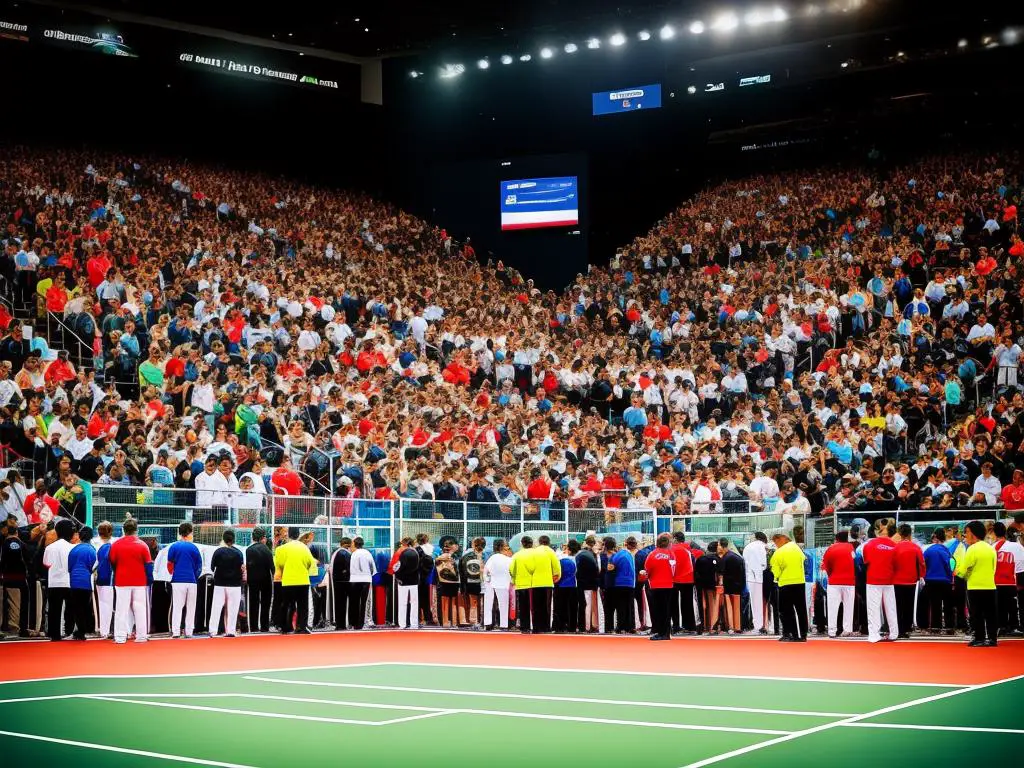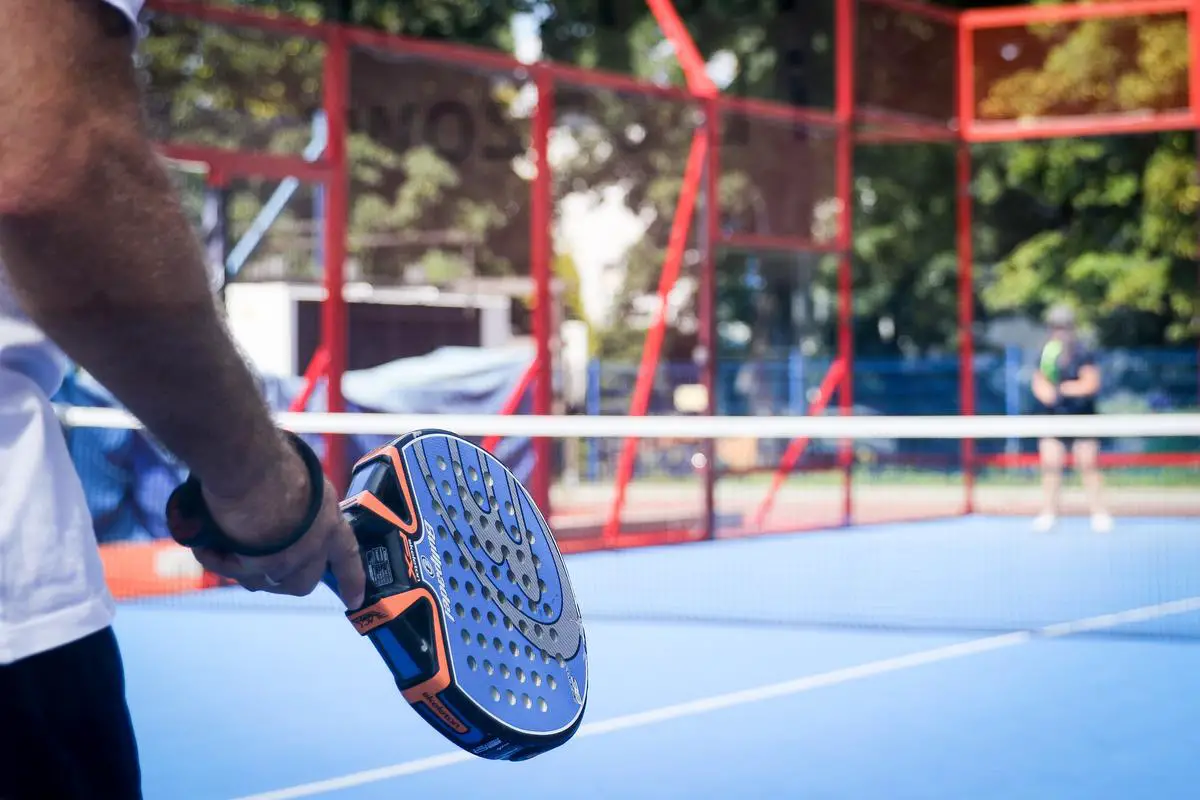Enchanting the sports enthusiasts with its unique blend of tennis and squash, Padel, although relatively new, has woven an intriguing tapestry of history. Mexico, the birthplace of Padel in 1969, showcased the ingenuity of Enrique Corcuera who devised the initial design of the court and structure of this captivating game. Since then, the sport has captivated the hearts of millions in Spanish-speaking countries, demonstrating an incredible journey of growth and evolution. This fascinating narrative encompasses numerous facets including the evolution of the game, its spread globally, and its impact not just as a competitive sport but a social conduit bringing communities closer together.
Origins of Padel
The Dawn of Padel: Enrique Corcuera’s Vision
The game of padel was brought to existence in 1969 in Mexico by Enrique Corcuera. Known as a Mexican entrepreneur who harbored a love for sports and outdoor activities, Corcuera found that the sports that were trending at that time didn’t adequately accommodate the limited space he had in his property at Acapulco. This led to him coming up with the design for a tennis-like game that could be played within a smaller space.
The brilliance of Corcuera was not just in the creation of the game, but also in the design of the playing field itself. Instead of a spacious lawn, Corcuera designed a scaled-down tennis court in the backyard of his holiday home, in essence creating the inaugural padel court.
The original padel court was a 20 by 10 meters defined area which was enclosed by three walls. Unique adaptations like the possibility of balls bouncing off the walls added an extra dimension to the game. In comparison to an open-air tennis court, this structure required players to develop and display more skill, strategy and finesse in their game.
Initial Structure and Gameplay
The early game rules of padel were adapted wholesale from tennis with minor revisions. Scoring rules were the same as in tennis, but with a few key differences in gameplay. An essential alteration was that the ball had to bounce off the wall before being returned – a move that’s illegal in tennis. These peculiar rules and the novelty of the game started attracting the interest of people within Corcuera’s social circle, and the craze for padel began to spread.
The bat or the racquet that Corcuera designed for padel was different from the tennis racquet too. It was solid with no strings and perforations throughout the hitting surface, which altered the ball’s response and complicated gameplay.
Padel Beyond Mexico and Its Growing Popularity
Enrique’s close friend, Alfonso of Hohenlohe-Langenburg, a Spanish businessman and playboy, was reportedly charmed by this exciting and innovative game during his visit to Corcuera’s house. Recognizing the potential of this game, Alfonso decided to introduce the sport in his homeland, Spain. In 1974, he built the first padel club in Marbella, Spain where the game’s popularity exploded among the Spanish populace.
The growing appeal of the game led it to be introduced in various other Spanish-speaking countries including Argentina where it was first introduced by Julio Menditenguia in 1975. Argentina quickly established itself as a dominant force in World Padel and contributed to developing and standardizing rules of modern Padel we have today.
Trace the evolutionary path of padel, and you’ll traverse an intriguing route that ranges from a small patch on Corcuera’s property in Acapulco to being a beloved sport in many Spanish-speaking nations and beyond. This journey wonderfully captures the immense potential of a modest but inventive idea. Moreover, it also highlights the capacity of a simple sport to bridge cultural and recreational divisions across countries and continents.

Evolution and Development of Padel
The Birth of Padel: Early Beginnings
The origins of padel are rooted in the 1960s within the confines of Acapulco, Mexico. The game was the brainchild of renowned businessman Enrique Corcuera. Initially, the sport was conceived to be played within the limited expanse of a tennis court situated on Corcuera’s backyard. The court resembled a miniaturized version of a modern padel course featuring walls, a layout simply borne out of the necessity due to the paucity of space. Corcuera also took the initiative to pen down the first-ever rulebook of the sport, thus marking “Corcuera Rules,” which were widely recognized as the inaugural formal regulations in padel’s rich history.
A Journey to Argentina: Growing Popularity
By the 1970s, the sport had reached Argentina, thanks to Alfonso de Hohenlohe, a friend of Corcuera. He loved the game and took paddle rackets to his beach house in Marbella, Spain. There, he built the first padel court in Europe. Argentina quickly adopted the game due to its fun nature and easy-to-learn features. The Argentine Padel Association was established in 1974, and by 1975, the first national championship had taken place. During the 1980s and 1990s, padel’s popularity exploded in Argentina and Spain, becoming one of the most played sports.
The Evolution of Rules and Game Style
Over the years, padel has seen several changes in its original rules and gameplay style. Originally, the game was a hybrid of tennis and squash; it was played within an enclosed court with the balls allowed to hit the walls. The initial Corcuera Rules set the stage for how the game was to be played. However, formal rules of the game evolved, being more refined and detailed, courtesy of the professional padel associations.
The game’s style underwent changes as well. The additions of various techniques and strategies, including lobs, low shots, drop shots, and the ‘chiquita,’ made the game more dynamic over time. Players evolved from using pure power to involving sophisticated strategies and tactics.
Modernization: Equipment and Professionalization
While early padel was played with wooden paddles without strings, the modern game involves more technologically advanced materials. Today, we see padel rackets constructed with carbon fiber, foam core, and a perforated surface, designed to give players better control and power.
Moreover, the arrival of professional padel organizations marks a significant milestone in the game’s history. In 1991, Spain established its Professional Padel Circuit that attracted many international players. The emergence of the World Padel Tour in 2013 saw the game’s recognition as a professional sport offering a global platform for players.
The Evolution of Padel on the Global Stage
The formation of the International Padel Federation (FIP) in 1991 has had a significant impact on shaping padel as an internationally acknowledged sport. Regularly hosted tournaments and world championships include this fun and exciting sport, leading to its worldwide recognition. Currently, millions across the globe enjoy playing padel, amplifying its international presence even further. Its recent official status in the Pan American Games and potential inclusion in the Olympic Games is, indeed, a testament to its spectacular journey from a simple backyard activity to a globally acclaimed sport.

Global Expansion of Padel
The Humble Beginnings and Rapid Expansion of Padel
Often termed as padel tennis, padel traces its origins back to Mexico in the late 1960s. Enrique Corcuera, a wealthy Mexican businessman, conceived the sport by modifying a version of tennis to fit the confines of his small backyard. The addictive sport swiftly caught on among Mexico’s elite, and by the 1970s it had gone mainstream. It gained international attention when Prince Alfonso of Hohenlohe-Langenburg fell in love with the game during his visit to Mexico. He was responsible for introducing it to Spain, where it was warmly welcomed and quickly skyrocketed in popularity.
Emergence in South America and Europe
The growth of padel in South America was explosive, especially in Argentina. The country witnessed a Padel boom in the 1980s and 1990s, fuelled by the emergence of charismatic champions and major tournaments that attracted wide media attention. Argentina’s dominance in the sport has persisted, while other South American nations like Brazil and Uruguay have also seen substantial growth in Padel’s popularity.
In Europe, the sport first gained recognition in Spain, where it has evolved into an integral part of the nation’s sporting culture. It is now considered the second most popular sport in the country, surpassed only by football. Its popularity is attributed to the easy access to padel courts throughout the country and the relative simplicity and affordability of the game.
Key Milestones in Padel Expansion
A milestone in the globalization of padel came in the early 1990s with the formation of the International Padel Federation (FIP). The FIP hosted the first World Padel Championship in 1992, boosting the sport’s international profile and paving the way for its global expansion.
Another key event that sparked widespread interest in the sport was the inclusion of padel in the Pan American Games in 2019. This significant recognition placed the sport among the ranks of traditional games and boosted its popularity outside the traditional stronghold of Spanish-speaking nations.
Current Status of Padel Internationally
The current status of padel internationally shows impressive numbers. Spain alone has over two million active players and more than 10,000 padel courts. In Argentina, it’s estimated that Padel is played by over 6 million people.
Elsewhere in Europe, the sport has become increasingly popular, notably in Sweden, Belgium, Italy, the United Kingdom, and France. The Scandinavian country, Sweden, saw a dramatic increase in padel courts and players after the formation of the Swedish Padel Federation in 2012.
In Asia and Africa, the adoption of Padel is still in the early stages but shows promising growth with the establishment of national Padel associations in countries like Japan, China, and South Africa.
The Future of Padel: A Prospective Upward Trajectory
In recent years, the sport of padel has seen substantial growth, a trend set to continue as its popularity steadily rises. It’s particularly catching on in the United States, where it’s hailed as one of the fastest-growing sports. The International Padel Federation (FIP) even has an active bid to get padel recognized as an Olympic sport. If successful, this could catapult the sport into much wider global recognition and appreciable increases in participation rates.

Influence and Impact of Padel on Society
Padel’s Origins: From Humble Beginnings to Global Recognition
The sport of padel was born in Mexico in 1969, the brainchild of Enrique Corcuera who improvised on tennis to accommodate the limited space at his Acapulco home. This resulted in an exciting new racquet sport that blends elements of both tennis and squash. Initially, it was predominantly enjoyed in Latin American countries and Spain, but it didn’t take long for it to spread to other parts of Europe and beyond. Today, as health and fitness trends continue to evolve, padel’s appeal is reaching new heights on a global scale.
Health and Fitness Impact: Padel, a Game for All
As a low impact sport, padel’s influence on health and fitness is tremendous. It offers an extensive cardiovascular workout, improving heart health and enhancing endurance. It also hones reflexes, agility, and coordination. Despite being less physically demanding than tennis, it still provides a full-body workout, making it a popular choice among varying age groups and fitness levels. Moreover, the sport encourages discipline, focus, and strategy, contributing to mental health.
Padel has contributed to the shift in fitness trends, with an increasing amount of people choosing to engage in sports as a form of exercise rather than traditional gym workouts. The sport’s popularity surged during the 2010s, coinciding with a period when society was increasingly recognizing the importance of regular physical activity and the role of sports in promoting health and wellbeing.
Social and Cultural Impact: Padel in Community Building
Beyond its physical health benefits, the impact of padel extends into the social and cultural spheres of society. It promotes community engagement and acts as a social platform, bringing people together. It’s not uncommon to see community padel clubs where tournaments are organized regularly, creating opportunities for social interaction and fostering a sense of community spirit.
Inclusivity in Sports: Padel Breaking Barriers
One of the key aspects of padel’s global rise is its inherent inclusivity. Unlike many other sports, padel levels the playing field because it can be easily learned and played by people of different age groups, genders, and physical abilities, making it truly a sport for all.
Its simple rules and the smaller court size make the sport particularly attractive to the elderly and those with physical limitations. Mixed-gender matches are common in padel, which is an essential step towards gender equality in sports. This inclusivity is critical in wider societal terms, promoting a sense of belonging and diminishing social exclusion.
In many countries, padel is introduced in schools not just for its physical benefits, but also for its ability to instill collaborative skills and respect among students. The game encourages teamwork and strategy-building, traits that are transferrable to different areas of life.
Conclusion: The Universal Appeal of Padel
In conclusion, the influence and impact of padel on society are far-reaching. Not only has it contributed to changing fitness trends and promoting health, but it has also played a significant role in fostering community engagement and promoting inclusivity in sports. The history of padel is a testament to its growing appeal, and it continues to grow in popularity around the globe. Padel’s role in uniting diverse groups of people around a common interest and its contribution to societal health and wellbeing make it more than just a sport; it’s a social phenomenon.

Photo by thomasworks on Unsplash
Padel’s resonance in today’s world cannot be overstated. It has expertly woven itself into the fabric of societies around the globe, going beyond a simple sport by fostering a sense of community and promoting inclusivity. Its growth and evolution, from its inception in Mexico to its thriving presence globally, is a testament to its undeniable appeal. Chronicling this remarkable journey helps us understand not just its progression but also its impact on various aspects of society such as health, fitness trends, and community engagement. As we continue to witness the evolution of padel, its history serves as a rich backdrop against which the future chapters will be written.